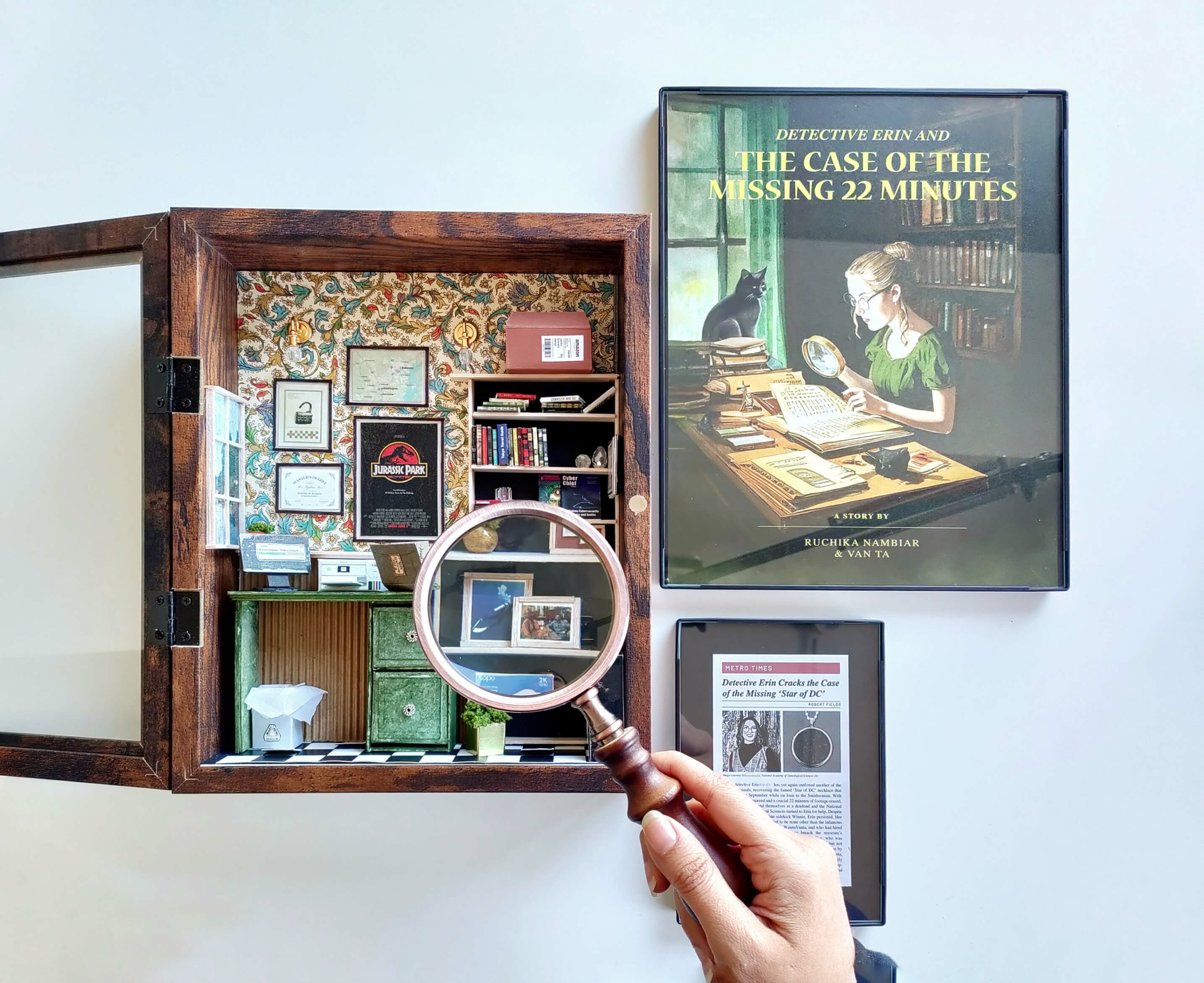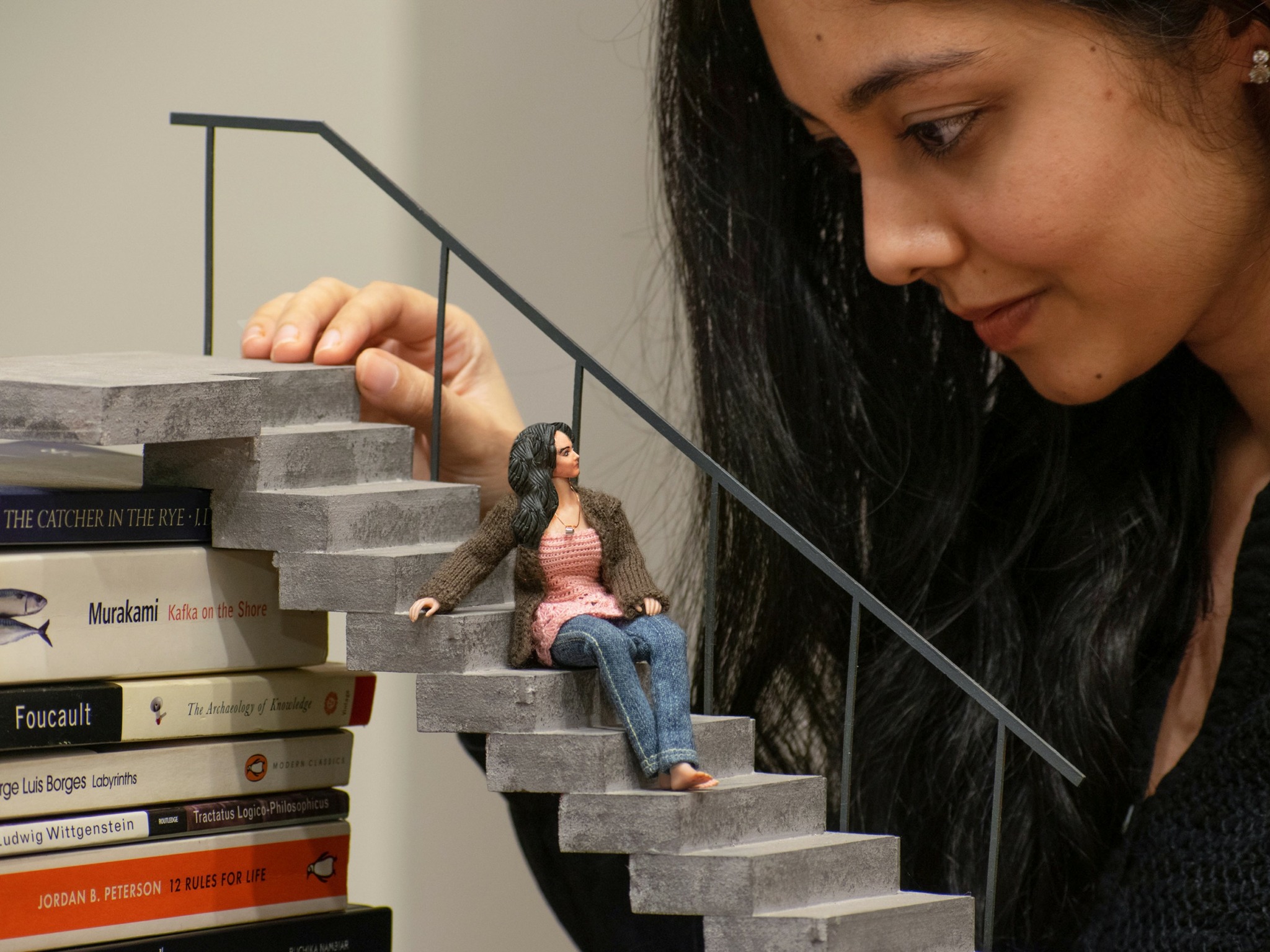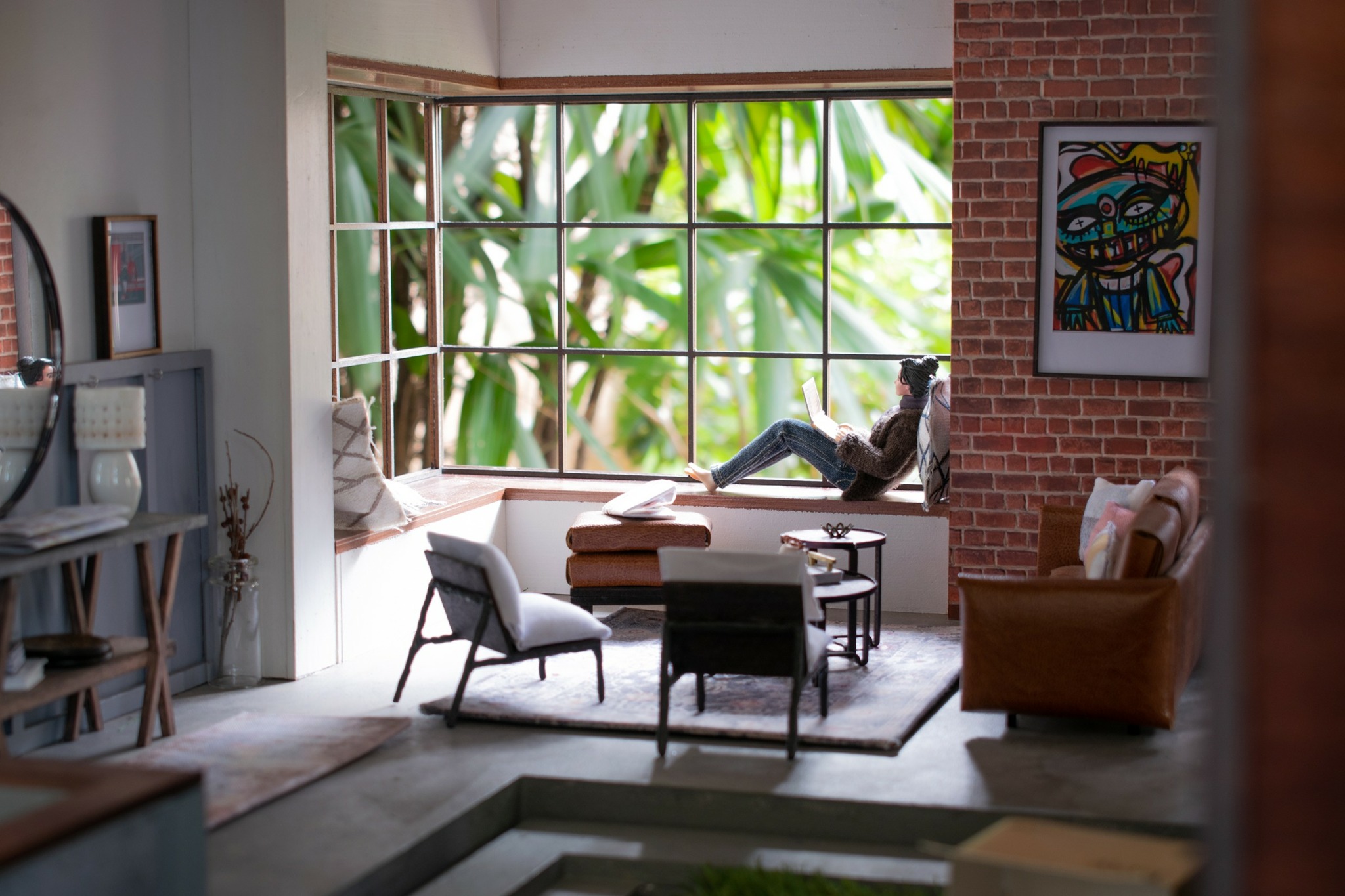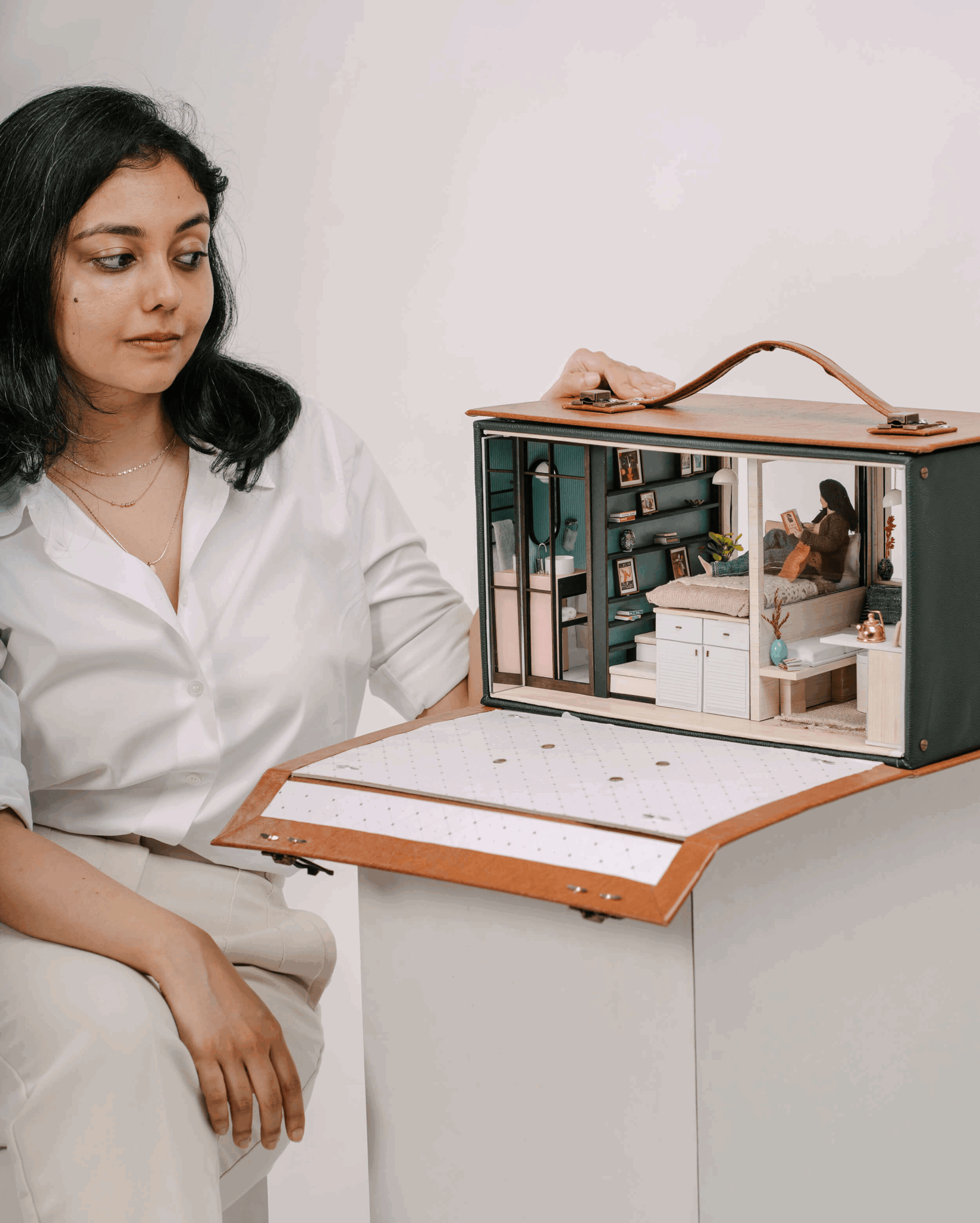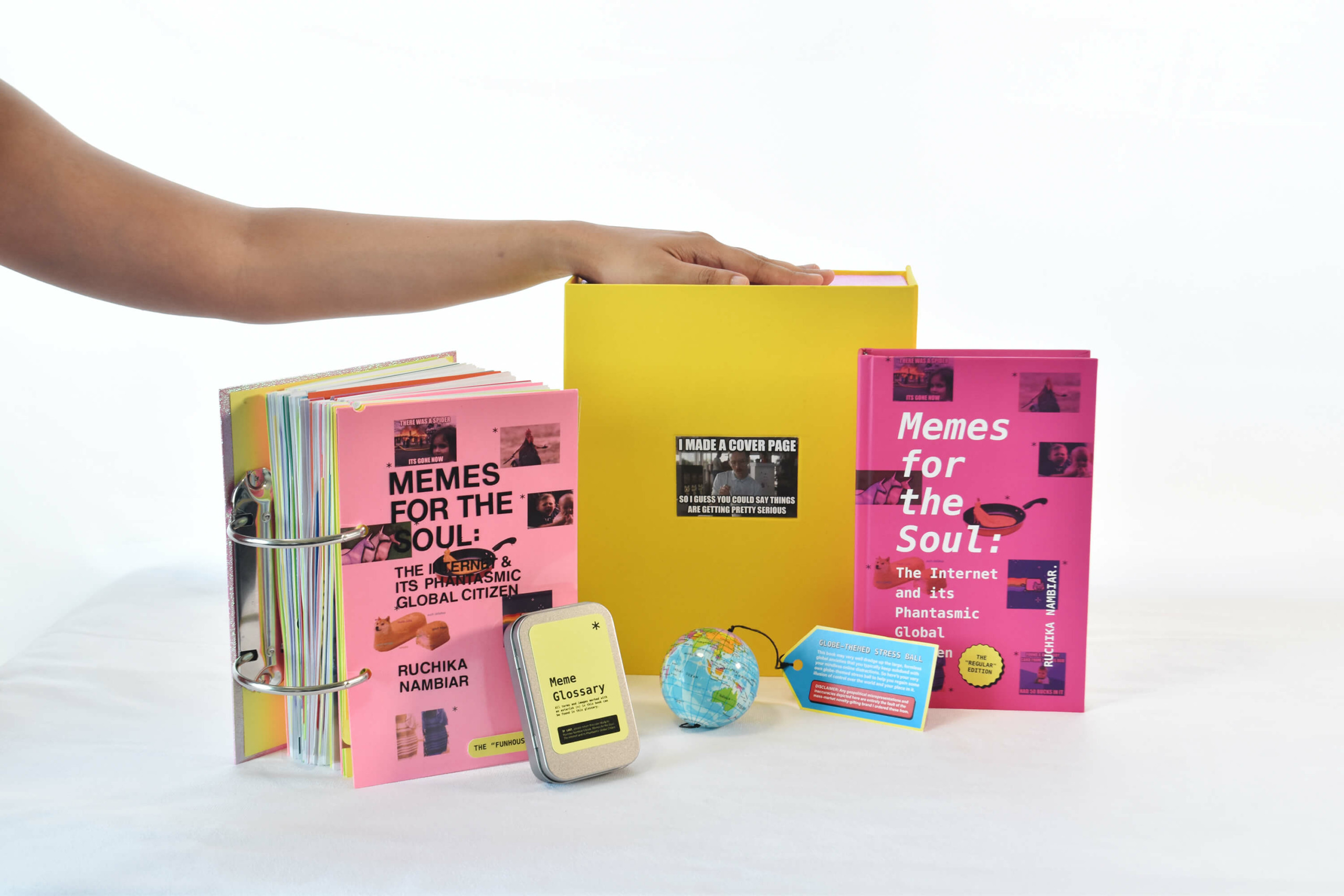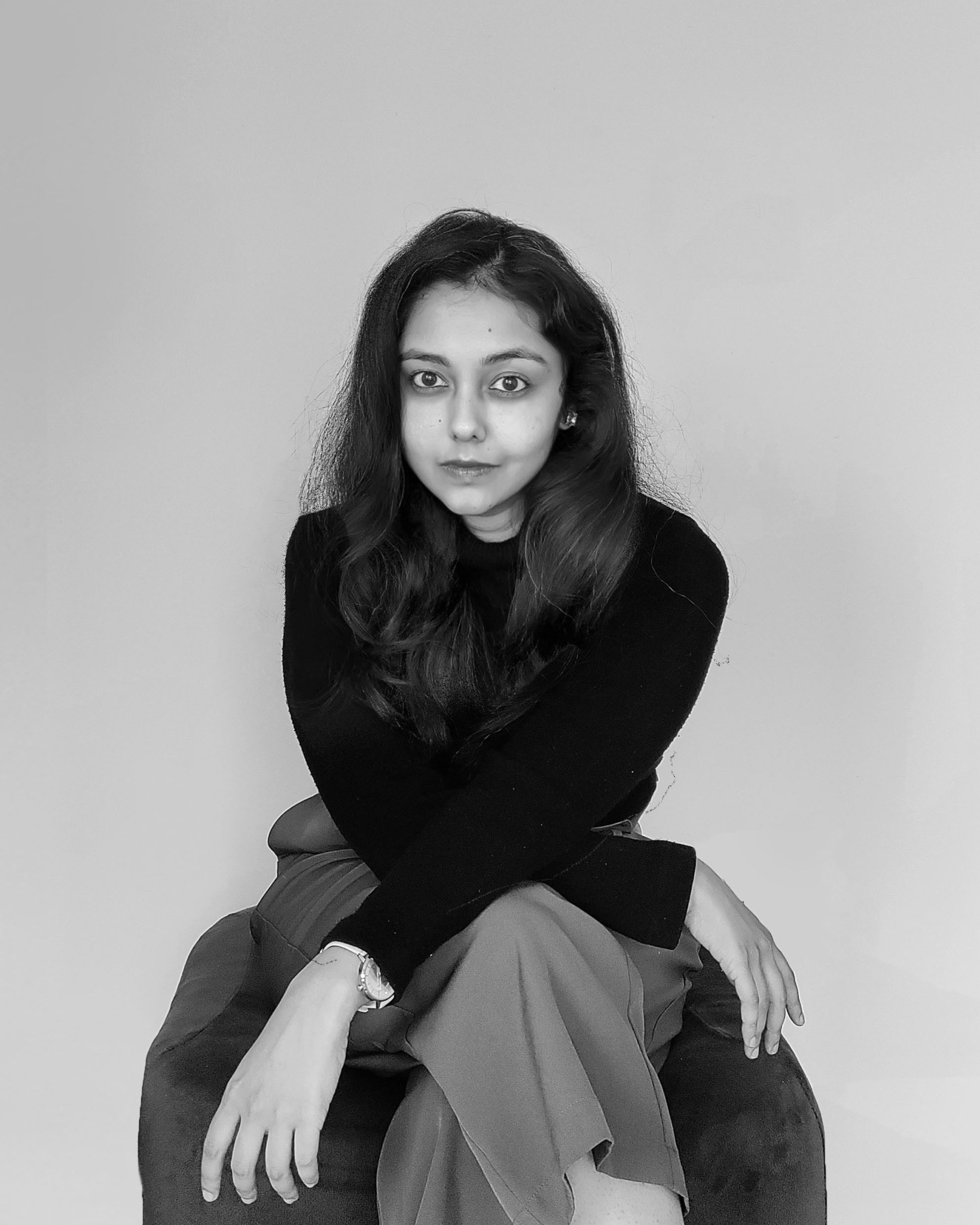We recently connected with Ruchika Nambiar and have shared our conversation below.
Ruchika, thanks for joining us, excited to have you contributing your stories and insights. We’d love to hear about when you first realized that you wanted to pursue a creative path professionally.
I’ve always known I would end up pursuing a creative career; I’ve never considered the option of doing anything else. In fact, I’ve never even thought of it as a “career” per se. Creative doing and making has simply been a way of life, right from when I was a child. My brother and I grew up playing games of make-believe and I used to enjoy making the objects that would bring those imaginary worlds to life — magic spellbooks, ID badges for our pretend covert-ops organization, doctor’s prescription notes. Knowing how to make those objects — making them look real and convincing — made me feel like I could hack the physical fabric of the real world and covertly insert my own objects into it. Objects could act like portals. The more I could make and insert my own objects into the “real world”, the closer I could push the world into being what I wanted it to be. I’ve never stopped doing that. And as I’ve grown older, all of my conscious and unconscious energy has gone into figuring out how to keep doing that throughout my life. Even to this day, my projects are all essentially trying to do the same thing, in both obvious and discreet ways. For example, The Dollhouse Project (2017-present) is an experimental storytelling project that follows my 5-inch tall alter ego Little R as she lives out her life in a miniature parallel universe. It’s been a decade-long process of building up to a career where I can actually get paid to do stuff like that. Just last year, I was commissioned to turn someone into the protagonist of their very own mystery thriller. It was called Detective Erin & the Case of the Missing 22 Minutes (2024). She received three weeks of clues that culminated in a final chapter that was solved inside a miniature room. I was creating secret notes that dissolved in water, writing messages in invisible ink and drawing up fake police reports. I even got to record ominous voice messages threatening to kidnap her cat. I don’t think I’ll ever get over the fact that I get to do this for a living.
Great, appreciate you sharing that with us. Before we ask you to share more of your insights, can you take a moment to introduce yourself and how you got to where you are today to our readers.
I call myself a producer of experimental books and stories. It’s basically the broadest label under which I can keep doing whatever I feel like doing without worrying about what discipline it fits into. During undergrad, I studied graphic design graphic design at Srishti Institute of Art, Design & Technology, India (2014). I later came to RISD as a grad student to do a research MA in Global Arts & Cultures (2023). So my work has always travelled fluidly across domains like graphic design, visual art, writing and research. My projects have taken the form of everything from artist books and graphic memoirs to miniature dioramas and interactive social-media narratives. I also write on themes of cultural philosophy and media studies. And I’m constantly looking for ways to smush all those things together into a single object that I can call a “book”. So if I had to pick a single label, I’d call myself a book artist. I treat the word “book” very loosely though — to me, a book is simply a container that can hold everything from text, images, objects, miniatures and more. I like playing with all the different forms a book could potentially take, and experiment with different ways it can be “read”. My projects experiment with the relationship between content, form and interaction to produce complex multimedia reading experiences. I recently wrote and produced a new interactive book, Memes for the Soul (2024). I’m also the creator of The Dollhouse Project (2017-present) that has been featured by Architectural Digest and India Today among others. My artist book Home vs Home (2023) lives in special collections at The Clark Art Institute and Bainbridge Island Museum of Art. My upcoming artist book Notes to Self was recently awarded a 2025 RISCA Make Art Grant and is going to be a 2D/3D graphic memoir. I’ve worked on experimental art commissions with brand collaborations like Samsung and several publication design projects. I frequently deliver talks – such as at TEDxRISD — and I’m also developing a mentorship programme, The Creative Finishing School, for young artists and designers. Alongside my practice, I also teach at RISD under the Department of Illustration.
I often think of myself as an artist who works like a designer. I work on a lot of my own art projects, but I also enjoy having a client to respond to. I enjoy when a client comes to me with a blank slate — I like listening to them, hearing about their life, their story, everything that matters to them — and then coming up with an object that’s just for them. They may come to me asking for a book, but I’ll probably send them back with some ridiculous object that’ll look like a book on the outside but might open up to reveal a 3D diorama or a mini exhibition or some other insanity on the inside. I never like to make the same thing twice. That also makes it challenging to “sell” my services — I’m basically telling people that I have no idea what I’ll make for them, but they should come work with me anyway because I can promise it’ll be special.
Let’s talk about resilience next – do you have a story you can share with us?
Sustaining an independent creative practice is a very strategic game. In many ways, doing creative work is like living the life of a child — playing make-believe and fashioning your version of an ideal world. But to do it for a living requires some very adult-grade strategic ability. I’ve learned that “making it” as a creative practitioner is all about playing the long game. You may not be able to live your ideal creative life fresh out of college, but could you work your way up to it in 3 years? In 5 years? The answer is usually yes, but it requires foresight, clarity of vision, and the grit to hold onto that vision with all ten fingers and toes. I’ve done a whole bunch of things in my decade-long career so far. Straight out of undergrad in 2015, I worked as a teaching assistant at my alma mater, project-managing a public art collective. I spent three years at a relatively corporate job, working in the strategy team at a design agency. In parallel, I maintained my freelance graphic design practice all through undergrad and both those jobs. But in my mind, all those things were always just jobs to me — they were simply a means of sustenance and they didn’t really define me as a creative practitioner. They weren’t what I wanted to be KNOWN FOR. What I was really working towards was being an independent creative producer — to make books and tell stories in ways people hadn’t experienced before. But I knew I’d have to work up to that and slowly build out that practice until it could sustain me financially. So no matter what job I held, I never stopped producing my own projects on the side. It was always important to me that I produce work that I could call my own, that I could put my name on. It wasn’t until 2019 that I quit my last job to focus solely on my independent practice, and even then it took a while before I could start attracting the kinds of experimental projects and clients I really wanted to be known for. It’s a slow and continuous process of tipping the scales: of removing the things that don’t define you one by one, and adding in the things that do. I quit my last job in 2019 when I’d saved up enough to focus on my own independent practice, when I could afford to hire interns or pay for my own software license. I continued my freelance design consulting because I knew that would be my bread-and-butter until my art/writing projects could pull their own weight. I kept up my writing and art projects, developing them to the point where they could start bringing in their own returns (not always monetary): press, visibility, speaking engagements, commissions and more. The more ROI they brought in, the more time I was able to devote to them in a week. My independent work gained more exposure after I came to RISD and found new forms of sustenance; my projects were now able to attract grants, acquisitions, more speaking engagements, workshops, teaching opportunities, and clients who came to me with the kinds of experimental projects that I actually wanted. It’s a long process of building your ideal life vision, brick by brick. I was able to build up to that only because I never let myself lose sight of that vision, no matter whatever else I did for sustenance. Even to this day, I do take on some assignments and clients that may not be wholly aligned with my ideal creative vision, but I take them on for purely practical reasons (perhaps to pad my income or to tide me over during a lean period). The good thing is, those have consistently diminished over time. Today, about 80-85% of my projects are aligned with my long-term vision, and I consistently work to bring that last 15% down to zero. The trick is to always stay focused on the work that you want to be known for, and look for every opportunity to do more of that every single day, month or year. I’ve never allowed my professional identity to be defined by any job or organization. Even today, while I teach at RISD and it’s very much a part of my ideal life vision, I still consider that secondary to my own creative practice. Without that clarity, it would be very easy to slip into a full-time teaching job simply for the sense of security it might bring. For people who lose their way and get caught up in the matrix of jobs and clients and all the things they do for sustenance, I often tell them to regain their focus with this question: “What do you want to be KNOWN FOR? If someone had to write a Wikipedia page about you, what would you want it to say?” That question usually helps snap your real goals into focus and show you what you should be working towards. Everything else is simply a vehicle to get there.
Is there something you think non-creatives will struggle to understand about your journey as a creative?
Non-creatives struggling to understand creatives — that’s an old and tired story. In some ways, I use my work to make myself more relatable to the people that matter (like my family and friends), but in other ways, I’ve made my peace with the majority of the world never really “getting it”. But I don’t want to romanticize the idea of the lonesome, misunderstood artist either. I think the lack of relatability goes both ways. The more wholly I’ve immersed myself in my own creative practice, the more I’ve struggled to relate to people who don’t work in the creative industry; I genuinely have trouble relating to their priorities and concerns. This became especially pronounced when I began pursuing my independent practice full-time. The more you do work that you genuinely enjoy, the more you start to wonder why everyone isn’t trying to do the same thing. Why isn’t EVERYONE an artist? That’s a question that often occurs to me these days, and I can’t pretend it’s a very sympathetic question either. It’s a pretty privileged question to be able to ask, and I try to remind myself of that every now and again. So it’s not just non-creatives who don’t “get it”, creative folks are very often in a bubble of their own whether or not they realize it. That said, I also know exactly how difficult it is to build and sustain a creative practice — even for people IN the creative industry. It requires vision and resilience, but also a really sharp sense of practicality. Many creative folks, despite knowing what they enjoy doing, don’t know how to hack the logistics of it. They don’t quite know how to make their living from it. They can’t quite wrap their heads around the long strategic game they need to play. So they end up with day-jobs that are in the creative industry but not quite what they originally wanted (I know many aspiring illustrators who end up with UX design jobs!), and then they moonlight on their own projects on the side. And before they realize it, years have gone by and their day job has ended up wholly defining their creative identity. I’ve always been an intensely practical person who likes hacking the logistics of a creative career, and I enjoy helping other people figure that out too. That’s what’s driving the book I’m currently writing — The Free Agent Manifesto. It’s a practical guide to living and working as an independent creative and I’m writing it as a live edition book that people can access on my website — the first chapter is already up there for free. It’s also the same questions driving my mentorship program, The Creative Finishing School. I’ve been developing it as a set of frameworks and resources to help creative practitioners navigate the industry. I do one-on-one mentorship sessions, and I’ve recently begun a 3-minute mentorship series on Instagram where I break down some of the nuances of sustaining a creative practice. I’ve also just begun testing out “live mentorship” sessions on Instagram and will soon create online courses and workshops too. You can find all of it and more on my website www.ruchikanambiar.com or my Instagram @thatruchika.
Contact Info:
- Website: www.ruchikanambiar.com
- Instagram: https://www.instagram.com/thatruchika/
- Linkedin: https://www.linkedin.com/in/ruchikanambiar/
- Youtube: https://www.youtube.com/@RuchikaNambiar


